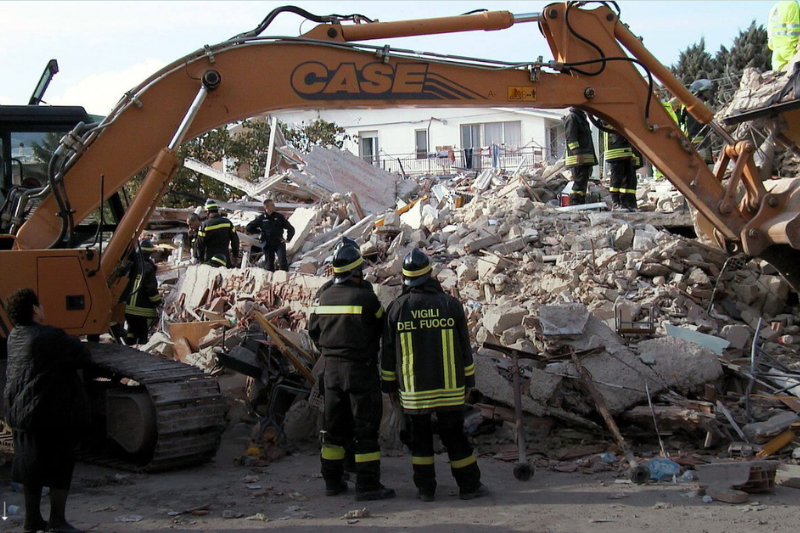The story of the Molise earthquakes of 2002 in a story map
A project realized by INGV to narrate the impact of such events in an area that, back then, was not yet classified as "seismic".

October 31 marks the anniversary of the 2002 earthquake that hit San Giuliano di Puglia in the province of Campobasso, an event sadly known for the tragedy at the "Francesco Jovine" elementary school where 27 children and a teacher lost their lives.
The earthquakes of October 31 and November 1, 2002 (both with a magnitude of 5.7) hit a part of Italy yet to be included in the seismic classification. The high vulnerability of the buildings sparked the tragedy in San Giuliano di Puglia with the collapse of the school: hours of drama were experienced in the hope of saving the children and people trapped beneath the rubble. A live television broadcast of more than 40 hours brought that footage into the homes of Italians. This event was crucial in pushing the government to approve the new seismic classification of the entire country quickly.
These are precisely the main aspects of the story map "Earthquakes in Molise in 2002" created by the INGV-National Institute of Geophysics and Volcanology, which, starting from the analysis of the seismic sequence and the seismic history of the municipalities in the epicentral area, narrates the impact of these earthquakes in an area that, back then, was not yet classified as "seismic."
The story map is divided into six chapters. It contains text, images, photographs, documents, videos, and scientific data on the earthquakes of October 31 and November 1, 2002 (some images and videos are taken from TeleMolise's live broadcast):
- The seismic sequence
- The effects of the earthquake
- Unexpected earthquake?
- Seismic classification before and after
- Forty hours of the live broadcast
- The stories of San Giuliano
The first two chapters describe the seismic sequence and its effects, including macroseismic studies conducted by the QUEST Operational Group of the INGV.
The third chapter covers the seismic history of the areas affected by the sequence, which were only experiencing strong Apennine earthquakes in the past. This is why the 2002 earthquakes were called "unexpected," and the affected Municipalities were not yet included in the seismic classification that was in force in 2002.
The fourth chapter discusses precisely seismic classification before and after 2002, with an in-depth examination of the evolution of regulations from 1984 until PCM Ordinance No. 3274/2003, which removed forever the words "unclassified," thus defining all Italian Municipalities as seismically active and classifying them into four danger zones from high (Zone 1) to low (Zone 4).
The fifth chapter is entirely focused on reconstructing the hours after 11:33 a.m. on October 31, when the joy of Halloween night preparations was suddenly interrupted by the earthquake at the "Francesco Jovine" school in San Giuliano di Puglia. The TeleMolise studios in Campobasso started a live broadcast of more than 40 consecutive hours following the rescue operations' development.
The story map ends with some reflections on San Giuliano di Puglia today: the inauguration of the new school in 2008, built precisely where the school collapsed; the opening in 2016 of the METE Museum (Museo Multimediale Memoria del Terremoto METE – Ricordare – Prevenire – Ricostruire); and the testimonials of those who survived and turned their grief into social, scientific or sports commitment.
The story map is available in the specific section of the blog INGVTerremoti